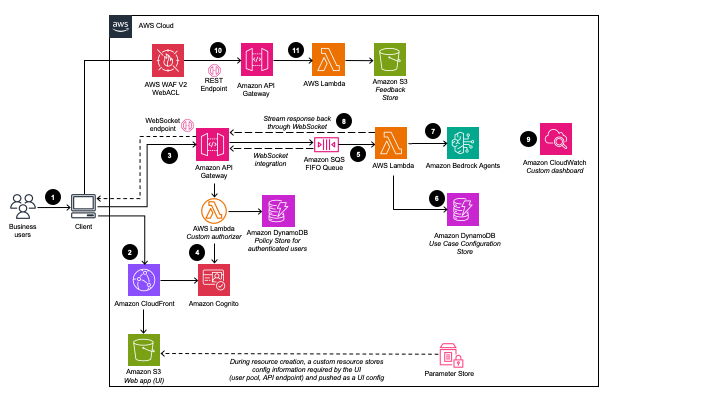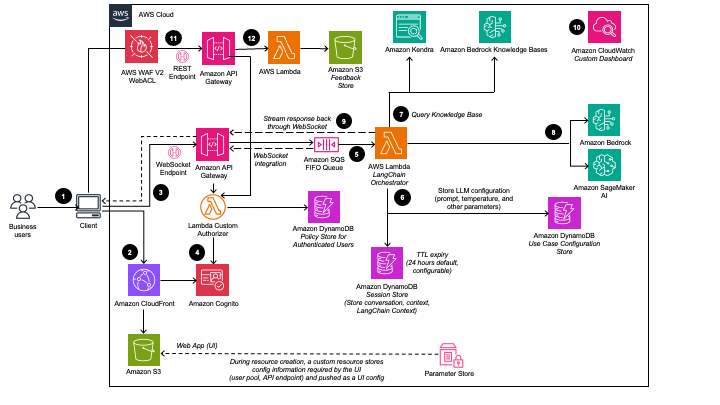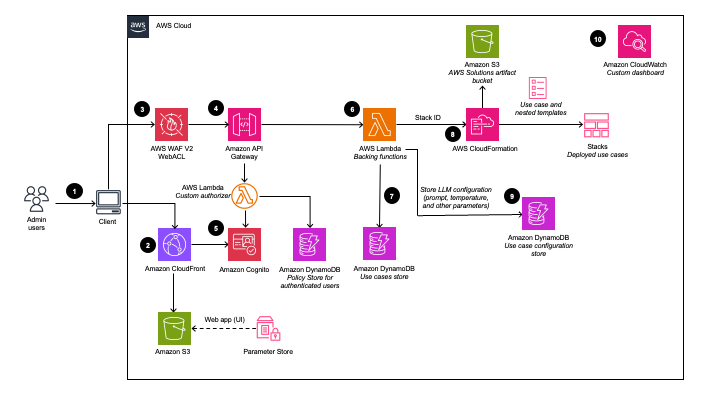Overview
Building generative AI applications can be complex for teams that don’t have deep AI expertise. Generative AI Application Builder on AWS simplifies this process, helping you develop, test, and deploy AI applications without extensive AI knowledge. This solution speeds up your AI development by easily incorporating your business data, comparing the performance of large language models (LLMs), running multi-step tasks through AI Agents, quickly building extensible applications, and deploying them with enterprise-grade architecture. Generative AI Application Builder comes with a ready-to-use generative AI chatbot and API that can be quickly integrated into your business processes or applications.
This solution includes integrations with Amazon Bedrock and its LLMs in addition to LLMs deployed on Amazon SageMaker. It uses Amazon Bedrock tools for Retrieval Augmented Generation (RAG) to enhance AI responses, Amazon Bedrock Guardrails to implement safeguards and reduce hallucinations, and Amazon Bedrock Agents to create workflows for complex tasks. You can also connect to other AI models using LangChain or AWS Lambda. Start with the simple, no-code wizard to build AI applications for conversational search, AI-generated chatbots, text generation, and text summarization.
Benefits
How it works
Agent Use Case
The Agent Use Case enables users to hand off tasks for completion using Amazon Bedrock Agents. You can select a model, write a few instructions in natural language, and Amazon Bedrock AI Agents will analyze, orchestrate, and complete the tasks by connecting to your data sources, or other APIs, to fulfill your request.

Text Use Case
The Text Use Case enables users to experience a natural language interface using generative AI. This use case can be integrated into new or existing applications, and is deployable through the Deployment Dashboard or independently through a provided URL.

Deployment Dashboard
The Deployment Dashboard is a web UI that serves as a management console for admin users to view, manage, and create their use cases. This dashboard enables customers to rapidly experiment, iterate, and deploy generative AI applications using multiple configurations of LLMs and data.

About this deployment
Version: 3.0.0
Released: 5/2025
Author: AWS
Est. deployment time: 10 mins
Estimated cost: See details
Deploy with confidence
Everything you need to launch this AWS Solution in your account is right here
Deployment Options
Related content
Did you find what you were looking for today?
Let us know so we can improve the quality of the content on our pages